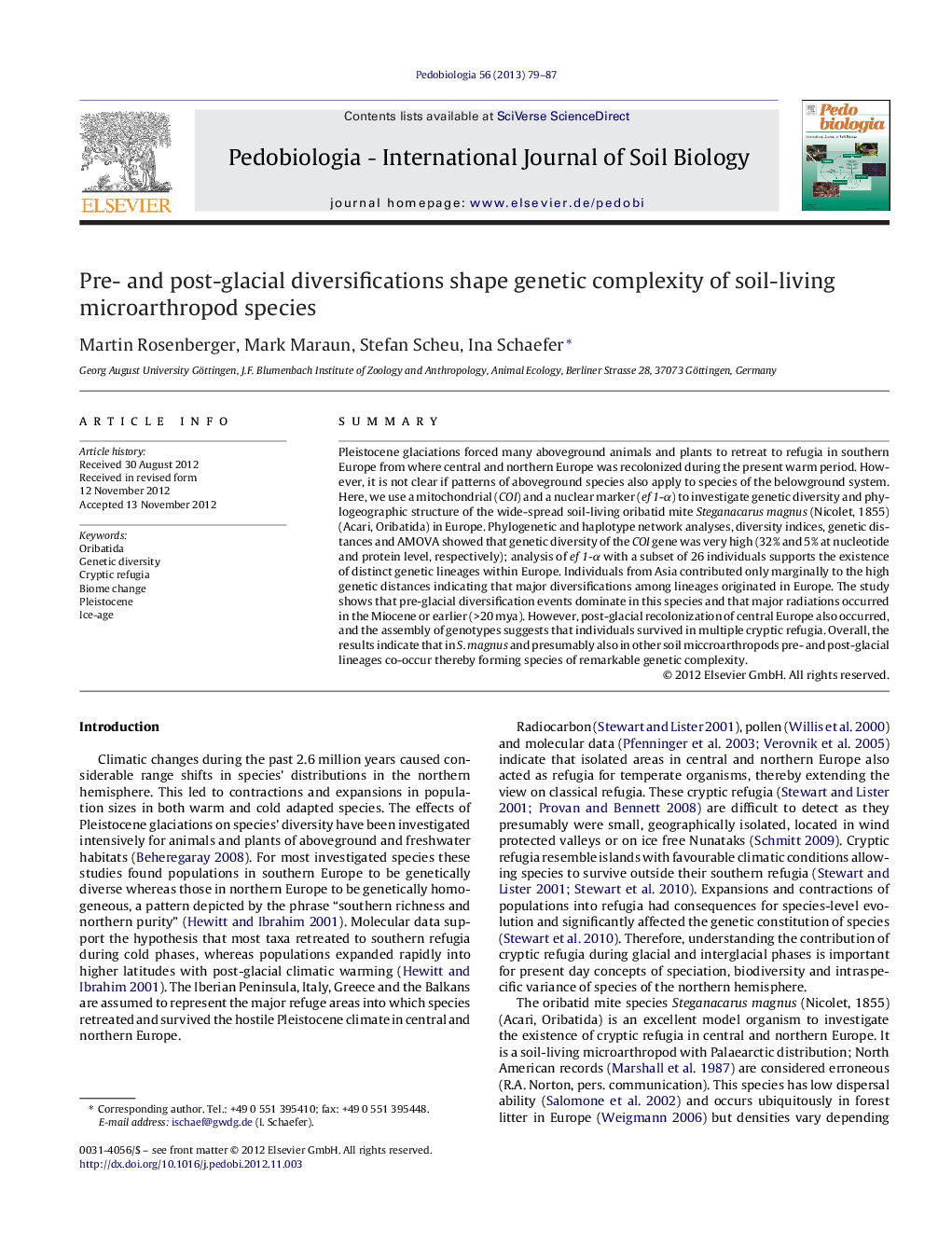| Article ID | Journal | Published Year | Pages | File Type |
|---|---|---|---|---|
| 2061112 | Pedobiologia | 2013 | 9 Pages |
SummaryPleistocene glaciations forced many aboveground animals and plants to retreat to refugia in southern Europe from where central and northern Europe was recolonized during the present warm period. However, it is not clear if patterns of aboveground species also apply to species of the belowground system. Here, we use a mitochondrial (COI) and a nuclear marker (ef 1-α) to investigate genetic diversity and phylogeographic structure of the wide-spread soil-living oribatid mite Steganacarus magnus (Nicolet, 1855) (Acari, Oribatida) in Europe. Phylogenetic and haplotype network analyses, diversity indices, genetic distances and AMOVA showed that genetic diversity of the COI gene was very high (32% and 5% at nucleotide and protein level, respectively); analysis of ef 1-α with a subset of 26 individuals supports the existence of distinct genetic lineages within Europe. Individuals from Asia contributed only marginally to the high genetic distances indicating that major diversifications among lineages originated in Europe. The study shows that pre-glacial diversification events dominate in this species and that major radiations occurred in the Miocene or earlier (>20 mya). However, post-glacial recolonization of central Europe also occurred, and the assembly of genotypes suggests that individuals survived in multiple cryptic refugia. Overall, the results indicate that in S. magnus and presumably also in other soil miccroarthropods pre- and post-glacial lineages co-occur thereby forming species of remarkable genetic complexity.
